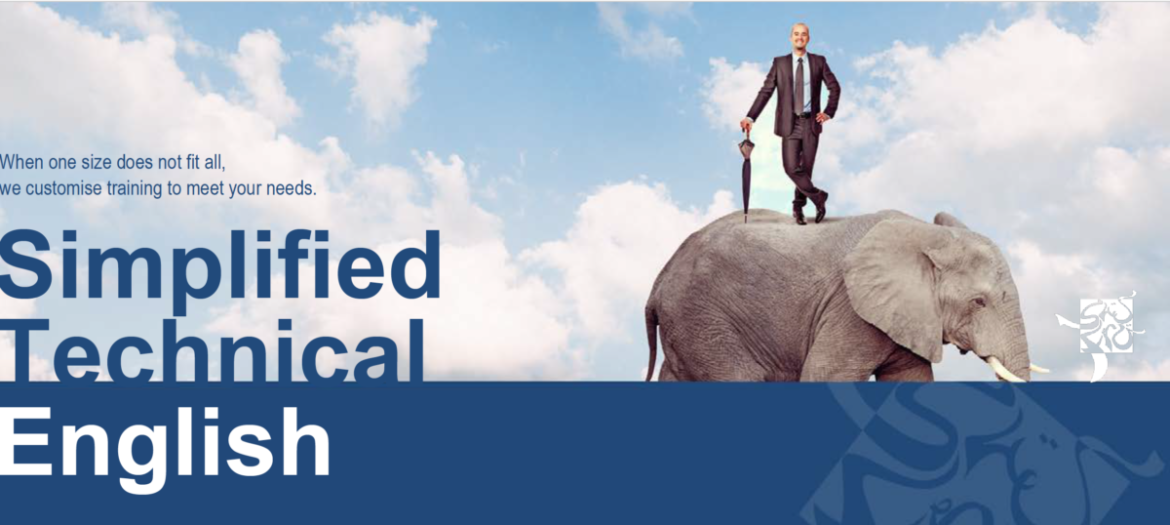Simplified Technical English as part of your content strategy
Today Maersk Drilling continues to deliver operational excellence while exploring new business models and innovative technologies. Their goal is to improve safety and efficiency and reduce cost and complexity, ultimately making offshore oil and gas more competitive. This is what they mean by Smarter Drilling for Better Value.
ASD-STE100 Simplified Technical English (STE) is a controlled language that is used to write technical manuals in such a way that they can be more easily understood by an international audience. To put it across plainly, STE is a form of controlled language that is guided by 53 technical writing rules that were put together by a committee of linguists, engineers, and manufacturers who established over the years that these writing rules made sense and allowed them to re-write any of their existing documentation based on these rules, making their documentation easier to understand, while maintaining accuracy, safety, and validity.
Develop, deploy, and deliver documentation with STE
STE Quick facts
Background: With the widespread dissemination of user documentation published in various delivery formats across several language translations, the relevance of global information management has become greater in an attempt to stem terminology inconsistencies, mistranslations, and the disproportionate escalation of costs associated with the maintenance, reuse, and consumption of technical content.
Year: In use since 1986
Current Version: Issue 8, May 2021.
Technical writing rules: 53
Dictionary word entries: approx. 2400 terms.
The STE specification also includes a core vocabulary of around 930 approved words and 1500 non-approved words that let technical authors write just about everything that they need for for procedural and descriptive texts. Therefore, the use of approved words, compliance with the standard, and a language quality checker tool to complement your content strategy efforts is akin to pooling your most valuable resources where people, internal processes, and innovative technologies become more aligned.
The role of technical authors and technical documentation managers
Technical writers are the go-between for subject-matter-experts (SMEs), engineers, designers and the end-users of documentation. Consequently, the responsibility of creating effective documentation falls on technical authors who will then endeavour to send out a clear, unambiguous, and user-friendly message about their products and line of services.
At the level of global information management, technical writing professionals should consider short-term tactics and longer-term strategies to overcome the following:
- An ever-increasing volume of words to write and translate
- Snowballing translation and documentation management costs
- Overlapping information across different versions of similar document types
- Low comprehension levels for the English language jargon.
STE in practice
If this is your first time hearing about STE, the example that follows will hopefully shed more light on the principles and best practices that govern good STE writing. Here is an original piece of text presented in standard English writing:
THE SYNTHETIC LUBRICATING OIL USED IN THIS ENGINE CONTAINS ADDITIVES WHICH, IF ALLOWED TO COME INTO CONTACT WITH THE SKIN FOR PROLONGED PERIODS, CAN BE TOXIC THROUGH ABSORPTION.
And here it is again in STE:
THE OIL IS POISONOUS. DO NOT GET THE ENGINE OIL ON YOUR SKIN. IT CAN GO THROUGH YOUR SKIN AND INTO YOUR BODY.
Making the comparison between the two types of writing above, you will see that the original writing is rather cumbersome in expression. It is also very likely that the person reading this sentence will have difficulties following the writer’s line of thought because of the longer sentence length and unnecessary information included. In contrast, the text written in STE is much more to the point and simply distils what is pertinent to the person doing this work:
- The oil is poisonous.
- I must always be careful not to touch oil without protection.
From this example, STE shows us that warnings and cautions must always start with a simple and clear command that is usually substantiated by a reasoning that comes before or after. A command informs the user about the precautionary measures to take to avoid danger. Presenting information as if it were a general comment in the original writing obscures the importance of the message and is not specific enough.
Where can I learn more about STE?
Shufrans TechDocs regularly hosts online training workshops for technical writers, SMEs, and engineers at different time zones for your convenience. To learn more about our diverse course offerings and workshop customisations that we can do for you and your global technical documentation team, speak to us today!
What customers are saying.. | Maersk Drilling
Jeppe Friis, Technical Inspector, Maersk Drilling Maintenance Support
“The introduction to ASD-STE100 was good and informative for someone like me with zero knowledge of the STE standard before. Rule 6.3 in STE writing summarizes the best of what I can take with me. There was quite a lot from the STE exercises to consume regarding grammar. Nevertheless, the worksheets were very good and helpful. I gained quite a lot of knowledge from them and they were the best part of this training workshop. Shumin was very professional and sharp as a razor. The best takeaway for me from her workshop is to give more thought to how I build my sentences rather than focussing on specific ‘allowed’ or ‘approved’ words.”
Terence Ong, Maintenance Systems Team Lead, Maersk Drilling
“A good 1 slide introduction on the history of STE100. Not too lengthy and still comprehensive enough to inform us about how the standard came about and who is the committee behind the updates. My favourite rule will definitely be the half rule since I can decide if I want to follow it or not. Jokes aside, I think all the rules will take some time to remember and put into practice. Interesting exercises during this training that allow us to practise what was just taught. Good that the answers were provided so we can refer back in future. Shumin enunciates her words well and is understandable, so I would recommend anyone who is interested in getting some knowledge about Simplified Technical English to take up this course with her. Having the class address the rules individually keeps us awake and on our toes!”
JD Hong, Maintenance Superintendent, Maersk Drilling ”
Good explanation with history and background of STE to illustrate the importance of using STE in the aircraft industry. Rule 6.1: To give information gradually is my favourite. My favourite verbs are DO, PREPARE, REPLACE, REMOVE and STOP.
I am now conscious of writing in shorter sentences for better clarity and getting the point across. Before STE100, I tend to include too much information for fear that the message was misinterpreted. These verbs are commonly used and I agree that the intrinsic meaning of these are sufficient to get the message across efficiently.
There were good practice sessions to reinforce the essence of the respective rules. I would most certainly recommend Simplified Technical English as a standard to maintenance related fields since I personally do not like to read instructions in a disorganised manner. “
An innovative approach to consider for your global documentation landscape
Over the last three decades, STE has emerged as a rather important and universal standard for technical English. Predictably, as a result of language standardisation, STE helps us to achieve a number of benefits. Technical writers become more consistent on a word level. This starts with the simple fact that we are going to use the same word whenever we refer to the same thing, so that means an improved level of consistency and consequently quality improvements.








